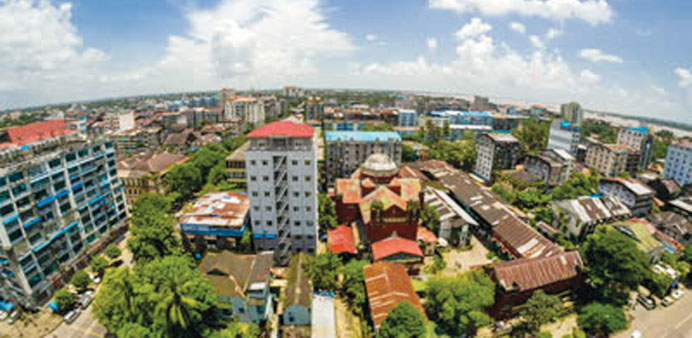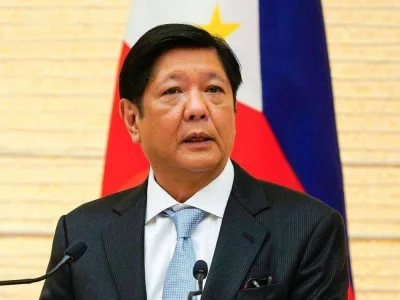A bird’s eye view of central Yangon. Myanmar, which sits on huge offshore hydrocarbon reserves, wants to reduce local consumption of natural gas for power generation to save the commodity for export, according to observers.
By Arno Maierbrugger/Gulf Times Correspondent/Bangkok
Myanmar’s announcement on July 21 that it plans to build nuclear reactors for “research purposes” has not only made the global community sit up and take notice, but revived the discussion about the use of nuclear energy in the partly power-starving countries of the Association of Southeast Asian Nations, or Asean.
While Myanmar’s Minister for Science and Technology, Ko Ko Oo, did not exactly specify that the goal of the nuclear research is to build nuclear reactors for energy generation, the country’s plan to use atomic power goes back to 2007 when Russia, through its company Rosatom, agreed to help design and build a nuclear facility in central Myanmar, a plan that, however, did never materialise.
Myanmar since repeatedly said it aspires to develop nuclear technology for power generation to “narrow the development gap”, given the fact that a whopping three quarters of the population in the country are not being supplied with energy at all. Myanmar currently has 29 power stations across the country — 18 hydropower stations, one coal-fired station and 10 gas-fired stations —, but the output is far lower than the rapidly rising demand, while only people and businesses in major cities and towns can access the power supply due to a lack of grid coverage.
Observers also mentioned that Myanmar, which sits on huge offshore hydrocarbon reserves, wants to reduce local consumption of natural gas for power generation to save the commodity for export, a strategy similar to the UAE in the Middle East which has begun building four nuclear reactors to diversify its energy sources away from oil and gas.
Myanmar’s plans have shed a light on the fact that interest in nuclear energy is gaining momentum again in Southeast Asia, where countries with strong economic growth continue to struggle to supply its population and businesses with enough reliable power, and those with renewable energy programmes such as Laos face protests from environmental groups and neighbouring countries for the impact that their massive hydropower projects are feared to have on the region’s ecosystem.
Some Asean nations have developed comprehensive nuclear programmes over the past decade, but the 2011 Fukushima disaster has thwarted their plans due to public and political outcries. Thailand, Malaysia, Indonesia and the Philippines have since delayed their nuclear development plans, but they are slowly surfacing again.
Vietnam is the most active Asean nation in terms of nuclear power development. The country plans to set up 7 nuclear power stations with 14 reactors by 2030 to provide 10 per cent of the power demand from there.
The Philippines was the first Asean country to complete a nuclear power plant in 1985 under then-President Ferdinand Marcos, but the facility never went into operation. Nuclear power plans were, however, revived in 2012, with the aim to have a new plant up and running by 2025.
Malaysia, Indonesia and Thailand also have their respective nuclear power strategies, but all have to cope with public protests and continued political debates on the issue. However, Malaysia as per its energy development plan wants to build two reactors by 2022, Indonesia and Thailand one each by 2025 and 2026, respectively.
Singapore has said that conventional nuclear power was “not an option” for the small city state for the time being, while Cambodia, Laos and Brunei don’t have atomic power ambitions at all.


